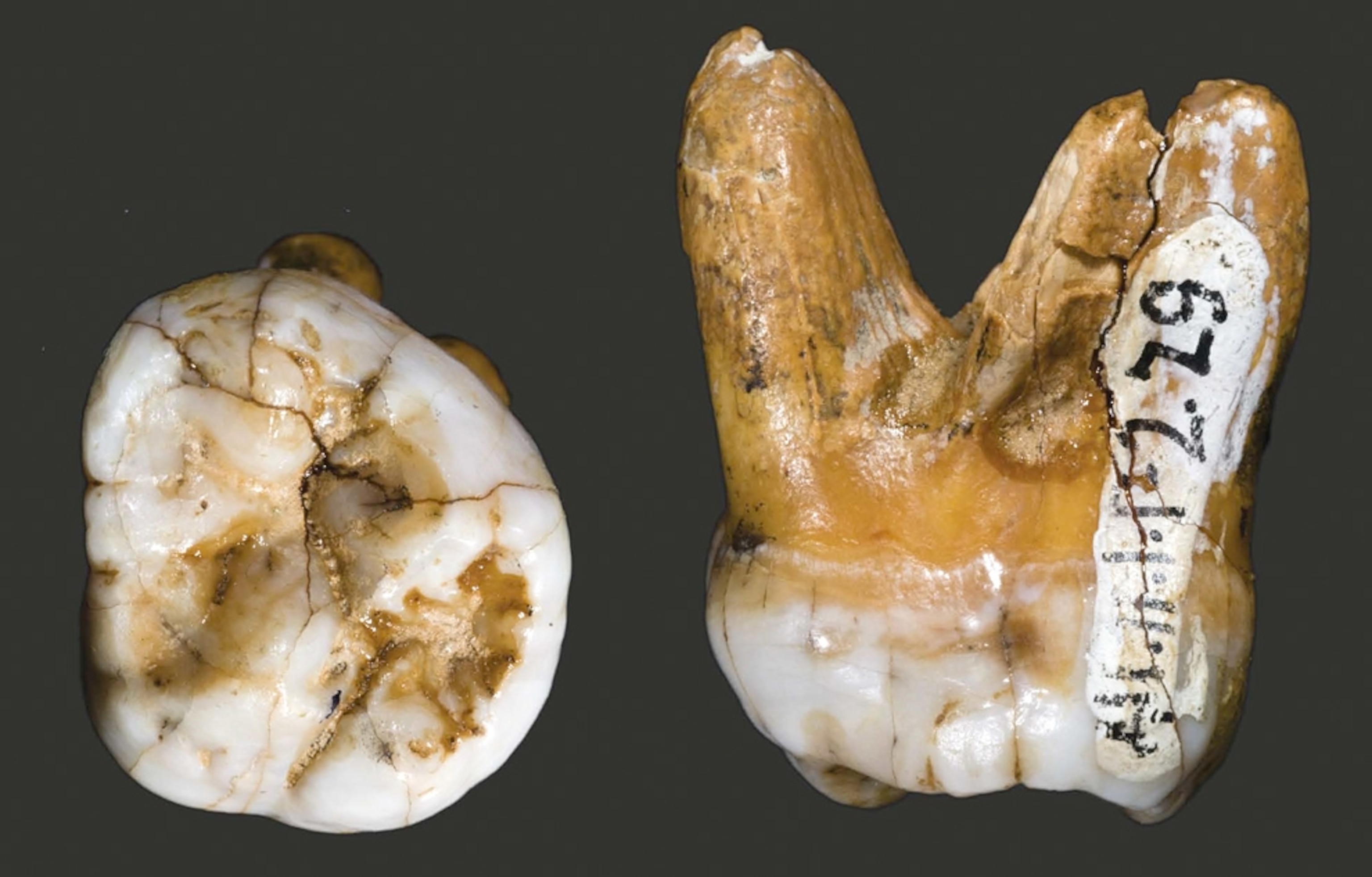
Asians, Too, Mated With Archaic Humans, DNA Hints
Denisovan genes found in people living in and near southern China.
First it was the earliest Europeans and Neanderthals. Now it appears that modern humans in Southeast Asia also became intimate with their prehistoric relatives.
About one percent of the genetic makeup of people from southern China and the surrounding region comes from an extinct group of humans dubbed the Denisovans, a new study says.
Considered by some to be a sort of sister species to the Neanderthals, the Denisovans—who may have represented an entirely separate human species—are largely a mystery, though they're thought to have had big teeth.
The latest find suggests that the two human types mated and bore offspring, and their descendants are still alive today in mainland Asia.
The new study is based on DNA extracted from a 40,000-year-old Denisovan finger bone discovered in Siberian Russia's Altai Mountains in 2008.
A previous study, published by the journal Nature in 2010, investigated the same fossil finger's DNA and found that people indigenous to Papua New Guinea and other Melanesian islands share 4 to 6 percent of their ancestry with the archaic human.
That study, however, didn't find any Denisovan genes in mainland Asians.
For the new analysis, "we set out to search for archaic [human] ancestry in a much wider set of populations than what has previously been done," said study co-author Mattias Jakobsson, of Uppsala University's Evolutionary Biology Centre in Sweden.
Searching for a Weak Signal
The Uppsala team used a type of data known as single nucleotide polymorphisms, or SNPs (pronounced "snips"), which measures genetic variation in DNA building blocks.
SNP genotype data is available for thousands of individuals, allowing for much larger data sets than studies that use complete genomes.
The Uppsala team compared both the Denisovan and the Neanderthal genomes with SNP data from more than 1,500 people from around the world.
The method, however, is more prone to biases and errors due to factors such as bottlenecks—when a population is greatly diminished for a time—as modern human populations expanded out of Africa. The team therefore compared different computer models of human expansion to try to iron out such errors.
According to Jakobsson, the comparatively weak Denisovan signature in mainland Asia can be explained if it's assumed there were two separate interbreeding episodes, with the Melanesian episode leaving a bigger mark genetically.
It's also possible that mainland Southeast Asia saw later influxes of modern humans who lacked Denisovan ancestry.
(Related: "Human Ancestor May Put Twist in Origin Story, New Studies Say.")
But paleogeneticist Johannes Krause of the University of Tübingen in Germany isn't convinced by the new findings, which were published online this week by the Proceedings of the National Academy of Sciences (PNAS).
"The signal they see is really weak," Krause commented. "One percent gets close to being not significant."
Humans Still 95 Percent Out of Africa
Krause, who co-authored the earlier study, points to another study, published last month in the American Journal of Human Genetics (AJHG), that directly contradicts the Swedish team's findings.
That DNA analysis, led by David Reich of Harvard Medical School in Boston, also found no trace of Denisovan ancestry in modern humans from mainland Asia.
"They have looked specifically in about 50 populations and 270 individuals in Southeast Asia, and they do not find anything like what was proposed in the PNAS paper," Krause said of the AJHG paper.
Reich's study instead extends the Denisovan link to people indigenous to Australia, the Philippines, and other islands lying east of the Wallace Line, an imaginary border, named after evolution theorist Alfred Russel Wallace, that marks the evolutionary divide between animals of Asian and Australian origin.
In general, Krause said, these kinds of studies show that our genetic origins are more mixed and complex than previously thought.
He added, however, that while "there is a component of people outside of Africa that have some archaic admixture, it is never more than 5 percent, so that still means that 95 percent of us is the modern human that left Africa 50,000 years ago."




